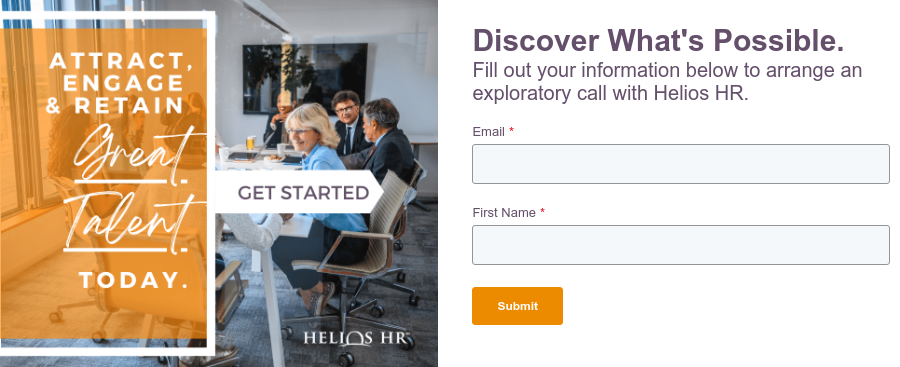By: Amy Dozier on March 7th, 2024
What Makes Up A Great Employee Total Rewards Package?
In today's highly competitive job market, employers are facing the challenge of attracting and retaining top talent. Offering a competitive salary is no longer enough. Employers must take a holistic approach and provide a comprehensive package that meets the individual needs of each employee. This is where the concept of Total Rewards comes into play.
How to Create the Best Total Rewards Package to Attract Key Talent
Have you taken the time to explore the factors that truly contribute to your employees' loyalty to your organization?
As a decision-maker, do you believe that you have the ability to provide incentives to your team members that will not only excite them but also ensure their long-term retention?
For those forward-thinking leaders, it's likely that you have already implemented a comprehensive total rewards package. However, if you haven't yet considered it, there's no better time than now to start!
Remember, creating a robust total rewards package can have a significant impact on attracting and retaining top talent. So why wait? Take the necessary steps to create a compelling package that will set you apart from the competition.
You may be surprised by the impact a well-thought-out Total Rewards package can make on attracting and hiring top talent.
What is an Employee Total Rewards Package?
Total Rewards is a concept that describes all the tools available to an employer that may be used to attract, motivate and retain employees. To an employee or candidate seeking new employment, the notion of total rewards includes perceived value as a result of the employment relationship.
The top challenge our clients seem to have is usually around attracting and retaining talent. It's a candidate-driven market and coming up with ways to show your employees that they are valued at your organization is critical in the race to compete. The strategy of offering employees and prospective candidates a comprehensive total rewards package is one of the best ways to attract, engage and retain talent.
Recommended reading: How to Attract and Retain With Your Total Rewards Program for Employees
What is Included in an Employee Total Rewards Benefits Package?
A comprehensive employee Total Rewards strategy encompasses various crucial aspects such as salary or compensation, benefits, work-life flexibility, performance, recognition, and growth and development. These elements play a significant role in shaping the overall employee experience within your organization. When creating a total rewards strategy, here are a few general suggestions to keep in mind:
1. COMPENSATION
There are many compensation strategies that provide cash incentives and encourage retention. Some common ways of paying employees include:
- Fixed pay — Generally, this is the base pay (salary) offered to an employee. It is usually determined by the organization's pay philosophy and structure and should be competitive based on the economy and other organizations with similar positions. You can get more certainty with your compensation strategy by conducting salary surveys on a regular basis.
- Variable pay — This is pay that varies and changes in accordance with the level of performance or results achieved. This is a one-time payment such as a bonus, which must be re-established and re-earned each performance period.
- Short-term incentive pay — This is another form of variable pay. It is implemented as a way to focus and reward performance over a period of one-year or less.
- Long-term incentive pay — A form of variable pay, long-term incentive pay is designed to focus and reward performance over a period longer than one year. Typical forms include stock options, restricted stock, performance shares, performance units and cash.
2. BENEFITS
Health, dental, and vision insurance, along with retirement savings plans, are usually the set standard for employee benefits. For many employers, it's a low and easy investment to also offer employees benefits like pre-paid legal, pet insurance, college savings plans, disability and life, an Employee Assistance Program (EAP), or wellness programs. The key is to offer above-average benefits if you want to stand out.
- Health and welfare (health, dental, vision, pre-tax benefits plans, life and disability insurance plans)
- Retirement options (up to a 6% match is the norm)
- Wellness programs (gym access, onsite wellness, fitness programs, etc.)
Since this article was first written, we are seeing employers get even more creative with their total rewards packages seven years later. With the COVID-19 pandemic in the early 2020s, most employers are paying particular attention to the well-being of their teams and rolling out mental health resources in particular.
In addition to EAPs, some of our clients are providing counseling and subscriptions to mental health apps such as Ginger, HeadSpace, and Calm. At Helios, our team appreciates having a chair yoga break during our All Hands meeting and hearing our CEO encourage us to get up and go for a walk outside during the workday. That leads me to the next point...
3. WORK-LIFE FLEXIBILITY
Flexibility is highly important for all generations in the workplace today. With technology advancements, the reality is that employees are often working or accessible long after or before "core business hours". Leaders who understand and support the work-life integration concept and provide flexibility to their employees will advance in the talent market. Some examples include:
- Flexible schedules (compressed work weeks, modified schedules, etc.)
- Remote work
- Paid time off (including vacation, sick, sabbaticals, bereavement, etc.)
- Support to care for family members (including parental leave)
- Community volunteerism opportunities
The pandemic has dramatically changed our workplaces. The majority of employers shifted to a remote work environment and for those who couldn't implement a working-from-home situation due to the nature of their work, modified their work schedules. What was once considered a 'perk', is now the norm and a sought-after employee experience. Here are some other ways employers are offering paid leave and flexibility.
4. PERFORMANCE AND RECOGNITION
Recognizing the achievements of high-performing employees is crucial for their motivation and development. By establishing clear goals, providing feedback, and rewarding their accomplishments, you can create a culture of excellence. Additionally, facilitating peer recognition programs can further enhance employee morale and foster a sense of camaraderie among colleagues. Here are some of the most prevalent employee recognition initiatives we commonly observe in organizations:
- Goal-specific awards (quality, cost-savings, productivity, safety)
- An employee of the month/quarter awards
- Appreciation luncheons, outings, office parties
- Regular one-to-one meetings with employees and managers
- Performance reviews or goal-setting coaching conversations
In addition to offering the programs above, we also utilize peer-to-peer and client recognition at Helios.
5. GROWTH & DEVELOPMENT
High-performing employees are driven to grow and develop during their tenure with your organization. Whether you are fostering their personal growth within your career advancement structure, supporting their expertise in specific subjects, or encouraging their individual interests, these efforts are always valued by employees. Common programs include:
- Tuition reimbursement and/or student loan repayment
- Mentoring programs
- Training (job shadowing, classroom, paid courses, etc.)
- Access to senior leaders
- Leadership coaching
At Helios HR, we strongly advocate for organizations to prioritize the implementation of a comprehensive total rewards program for their valued employees. By providing support and recognition, organizations can cultivate a mutually beneficial relationship with their employees. This investment not only fosters loyalty, productivity, and engagement but also offers both monetary and non-monetary benefits that promote growth and create an exceptional employee experience. Ultimately, these efforts contribute to long-term employee retention and success within the company.






